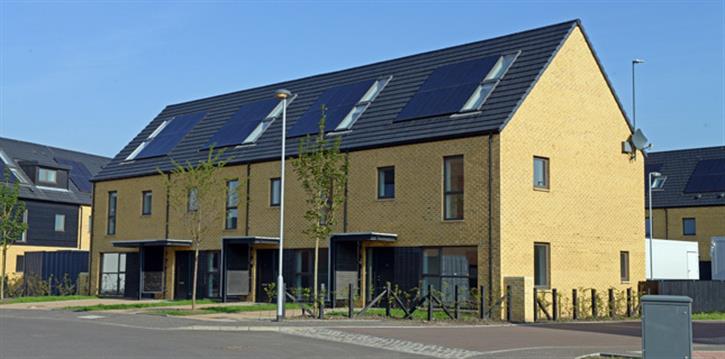NEWS
SCOTTISH SOLAR INDUSTRY PUBLISHES KEY ASKS FOR SCOTTISH GOVERNMENT
The Solar Trade Association (STA) Scotland, the Scottish arm of the solar industry trade body, has put forward a set of 'key asks' on solar to support the Scottish government's ambitious plans to meet 100% of electricity demand from renewables by 2020 and to feed into the new Energy Strategy for Scotland.
Scotland is currently over halfway to reaching this target, with over 7.5GW of renewables, of which over 5GW is generated through onshore wind technologies. STA Scotland believes solar can make an important contribution towards the rest of the target and provide an essential balance to the mix of renewables in Scotland.
The Department of Energy & Climate Change (DECC) recently reduced its support for solar by reducing the Feed-in Tariff levels by up to 64% from 8 February this year. Despite this, STA Scotland claims there still remains strong political and commercial support for the technology in Scotland.
In September 2015, the Scottish government used its devolved powers within the Renewables Obligation to boost investor confidence in large-scale solar in Scotland, by retaining its 'grandfathering' guarantee.
The 'key asks' that STA Scotland have proposed include:
- Establish an ambitious 'Solar Action Plan' for Scotland, to include both solar PV and solar thermal, with targets set for both technologies. STA Scotland believes a target of 2GW for solar PV and 200,000m2 (141MWth) for solar thermal by 2020 are achievable
- Establish Scottish financial support mechanisms for all solar projects under the transfer of powers as set out within the Scotland Bill. This would bridge the gap to the early 2020s when mainstream solar rooftops and farms can become subsidy-free
- Actively support the implementation of energy storage for both electricity and heat at all levels. Ensure solar thermal storage and space heating are permitted under the Renewable Heat Incentive, and that hybrid PV-thermal is supported
- Recognise the benefits of co-locating solar, wind and storage and sharing grid connections
- Help establish a detailed long-term UK Grid Strategy that is fair and enabling for distributed power
- Reconsider the proposed removal of the Renewable Energy Generation Relief Scheme from 1 April 2016.
- Introduce a Scottish replacement for the Green Deal covering both domestic and commercial properties, that leverages available resources and empowers people to take responsibility for reducing their own carbon emissions. The programme should encompass both energy efficiency measures and renewable technologies.
- Support the case to HM Treasury/HMRC that the 5% reduced rate of VAT be retained for all domestic solar retrofit, particularly for solar thermal, roof integrated PV and renovation as part of a social policy
- Mobilise the Scottish Government’s representation to the EU in Brussels to push for the removal of damaging anti-dumping and anti-subsidy tariffs
- Recognise solar technologies as 'reasonable measures' within the Energy Efficiency Standard for Social Housing (EESSH) programme. Bring forward legislation within the next Scottish Parliament to extend similar standards to the private sector
- Assess the capacity and adopt an ambitious target for the rollout of solar on the Scottish Public Estate, including public buildings, schools, leisure facilities and local authority offices
- Extend permitted development to all rooftop solar installations, as proposed in the ongoing consultation on permitted development rights for non-domestic solar
- Modify Scottish Building Standards so that heating systems for new homes are required to include 'solar-ready' thermal storage (ie a hot water cylinder), and where existing thermal storage is replaced in existing buildings that this is with 'solar-ready' storage.
John Forster, chairman of STA Scotland, said: "There are a number of simple, practical things the Scottish Government can do to boost solar north of the border, whether it is encouraging wind and solar to share grid capacity or changes to planning.
"We are also keen that the Scottish government look at options to establish its own financial support mechanisms for solar to bridge the gap between now and the early 2020s when we hope to see mainstream solar projects become subsidy-free.
"We are optimistic that the next few years will be good for solar in Scotland. There is scope for Scotland to lead the way within the UK, encouraging markets for solar on residential homes, commercial rooftops, new build homes and buildings and solar farms."

